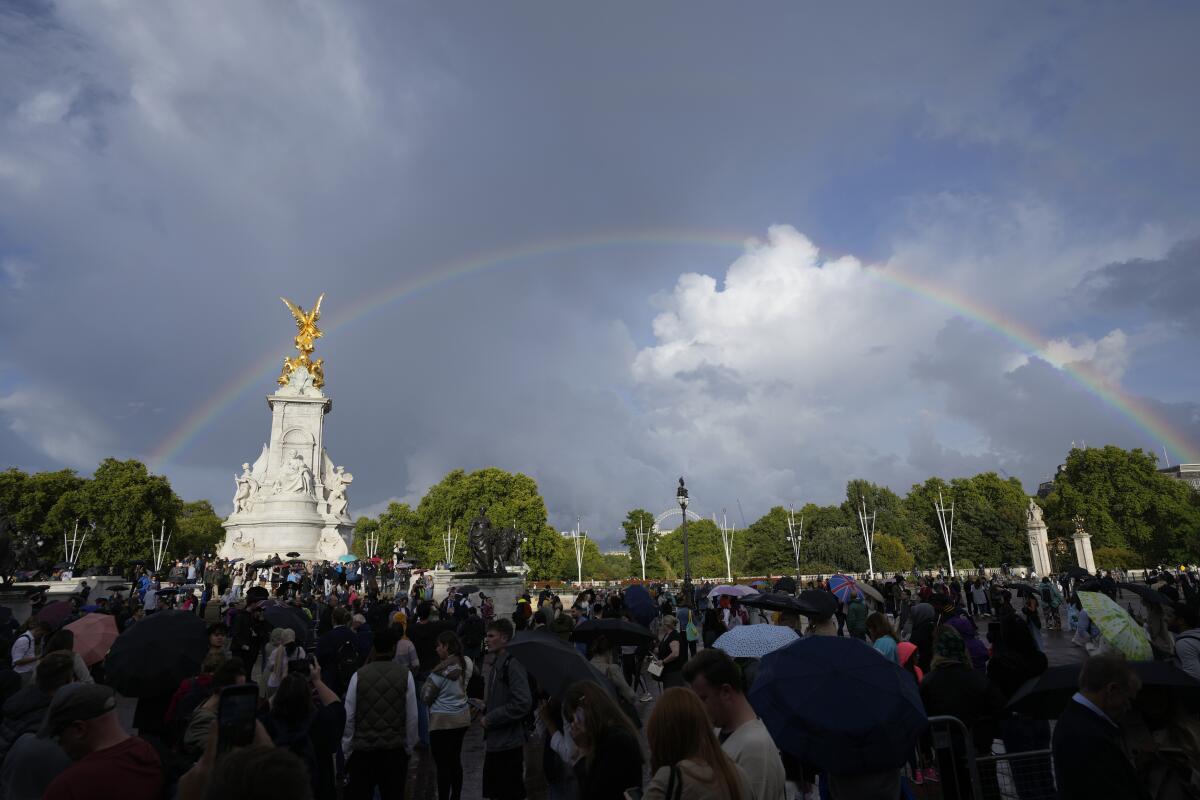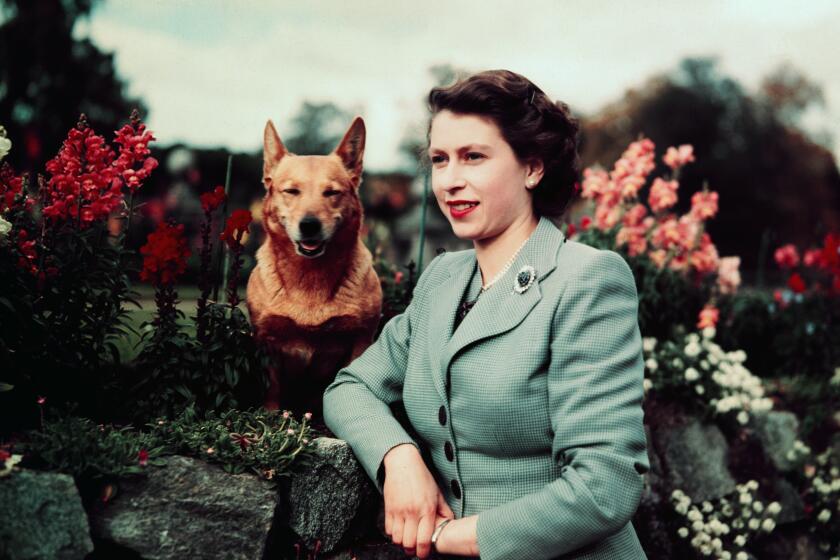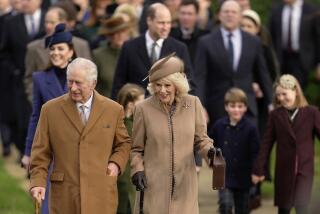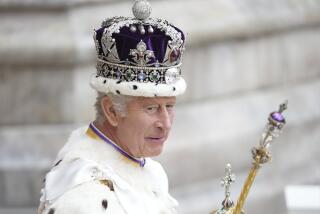What to know about Britain’s accession rules after Queen Elizabeth II’s death

- Share via
The British monarchy’s rules state that “a new sovereign succeeds to the throne as soon as his or her predecessor dies.”
That means Queen Elizabeth II’s eldest son, Prince Charles, became king immediately upon her death.
However, it may be months or even longer before Charles’ formal coronation. In Elizabeth’s case, her coronation came on June 2, 1953 — 16 months after her accession on Feb. 6, 1952, when her father, King George VI, died.
A look at the formalities that will take place after Charles accedes to the throne:
— Within 24 hours of a monarch’s death, a new sovereign is proclaimed formally as soon as possible at St. James’s Palace in London by the Accession Council. This is made up of officials from the Privy Council, which includes senior Cabinet ministers, judges and leaders of the Church of England, who are summoned to the palace for the meeting.
— Parliament is then recalled for lawmakers to take their oaths of allegiance to the new monarch.
Photos of Queen Elizabeth II’s life and reign as British monarch.
— The new monarch will swear an oath before the Privy Council in St. James’s Palace to maintain the Church of Scotland, according to the Act of Union of 1707.
— The proclamation of the new sovereign is then publicly read out at St. James’s Palace, as well as in Edinburgh, Cardiff and Belfast — the capital cities of the other countries that make up the United Kingdom — Scotland, Wales and Northern Ireland, respectively.
— Charles must declare to Parliament on the first day of its session after the accession, or at the coronation, whichever is first, that he is a faithful Protestant. The oath is mandated by the Accession Declaration Act of 1910.
— He must also take a coronation oath as prescribed by the Coronation Oath Act of 1689, the Act of Settlement of 1701 and the Accession Declaration Act.
— He must be in communion with the Church of England, a flexible rule that allowed King George I and King George II to reign even though they were Lutherans.
More to Read
Sign up for Essential California
The most important California stories and recommendations in your inbox every morning.
You may occasionally receive promotional content from the Los Angeles Times.











